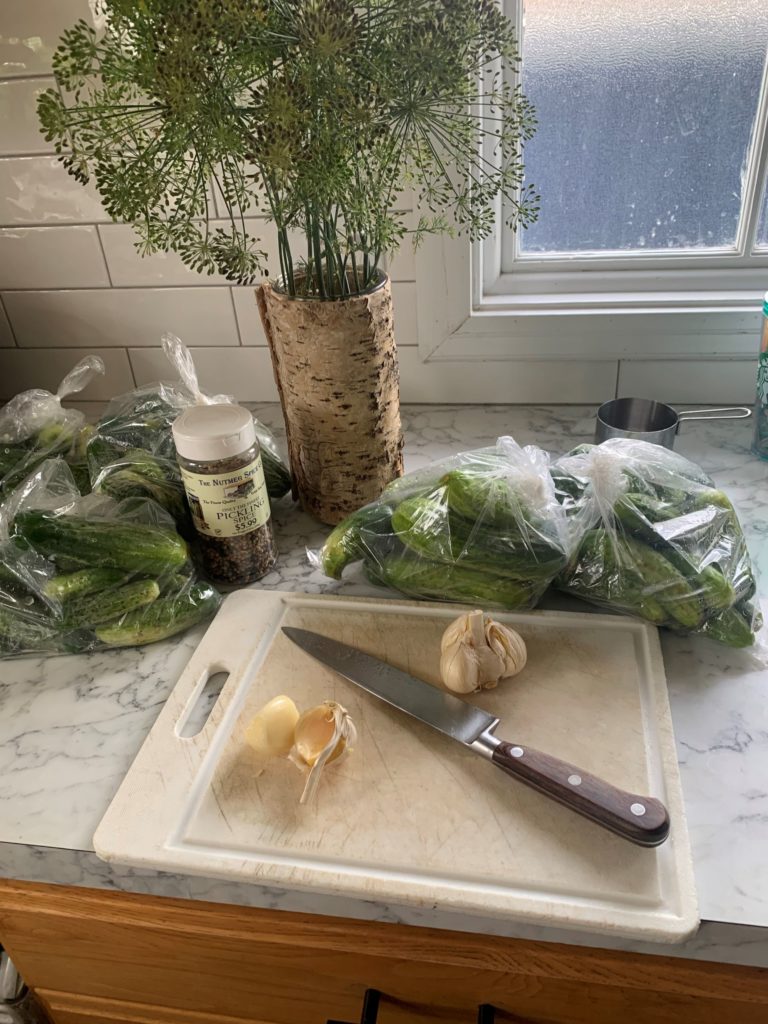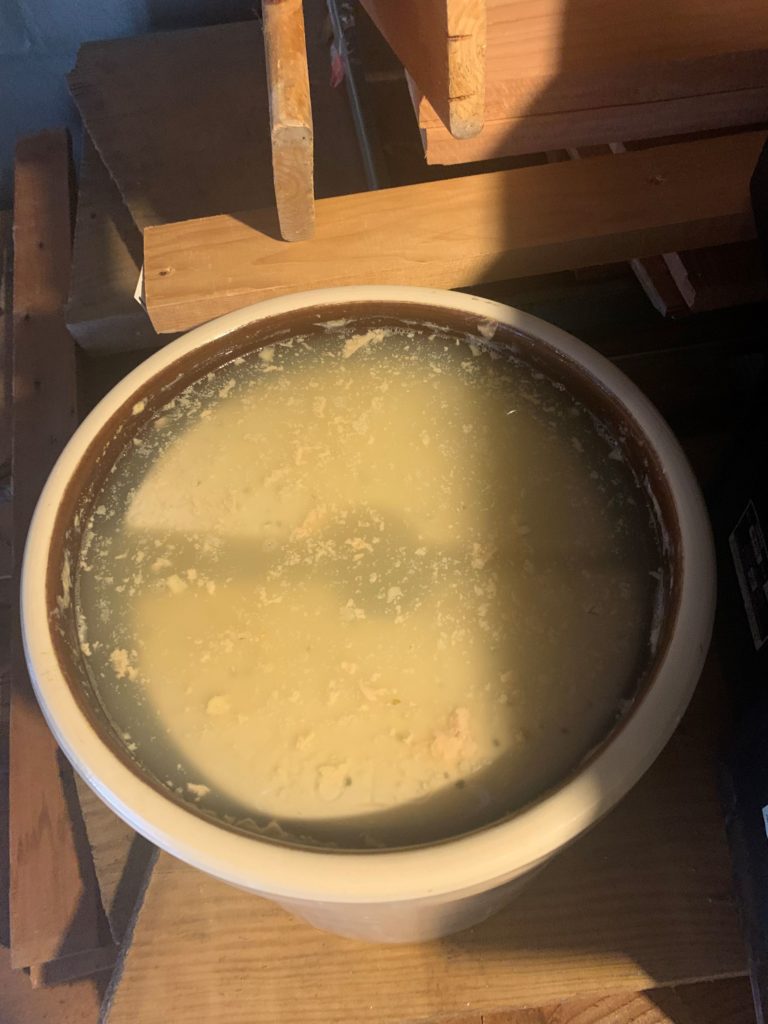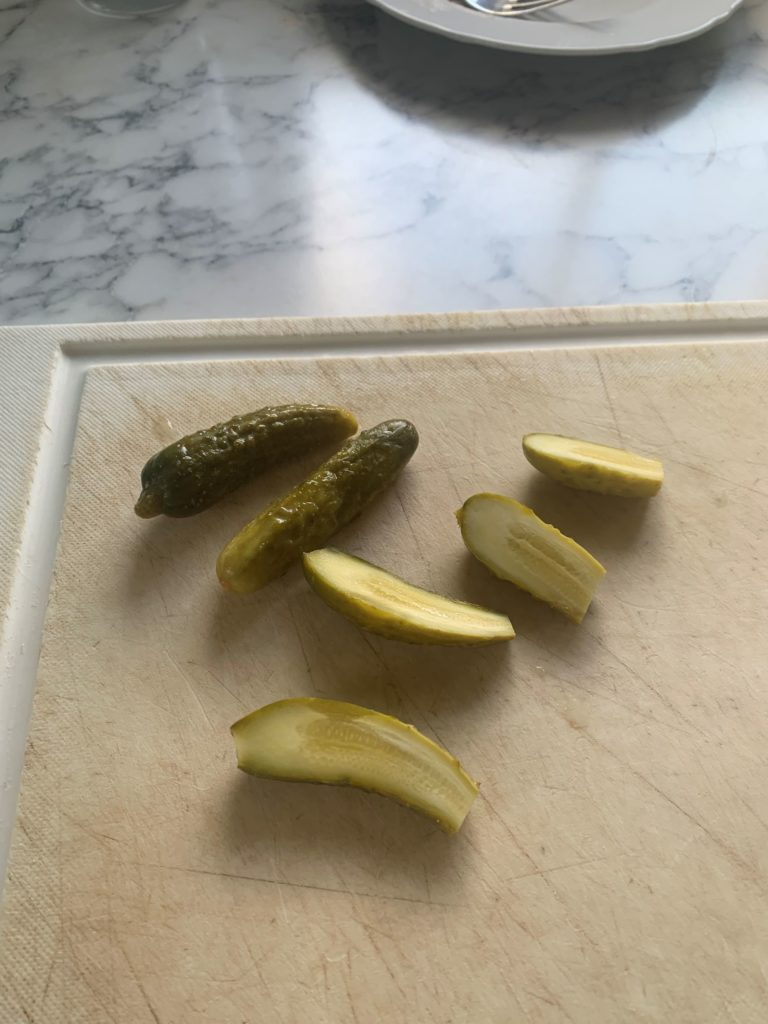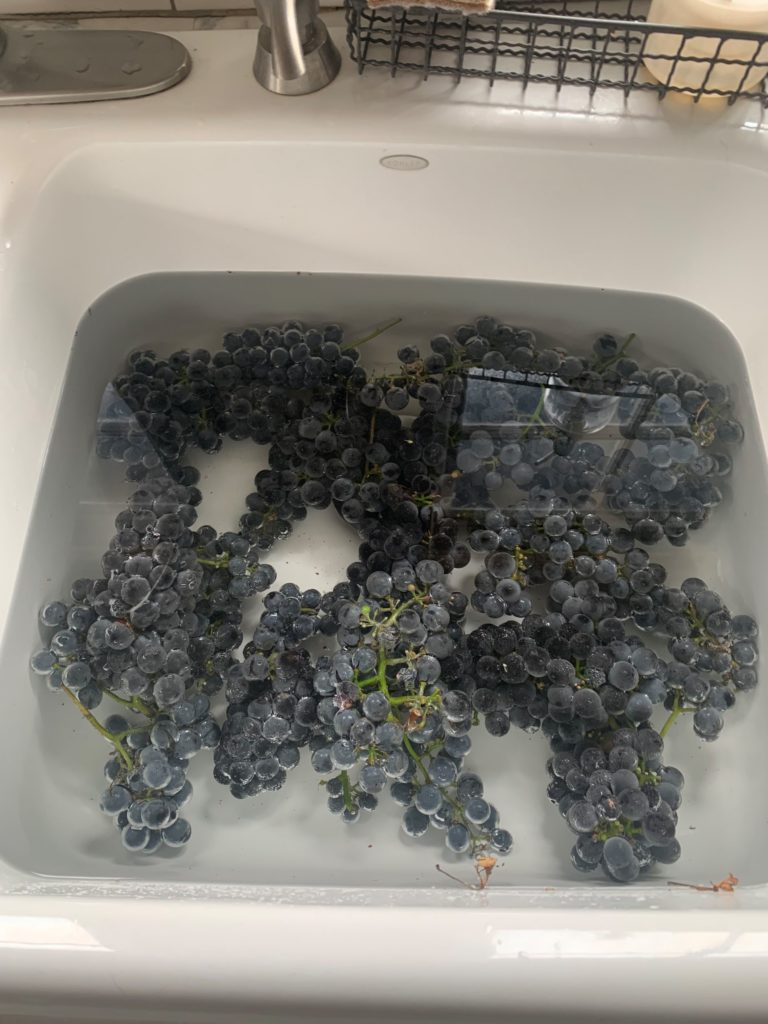Cucumbers. One of the things that my new approach has freed me to do is write more complete posts. In the recent past, I would have written an article starting something and then maybe I would have come back to it a few weeks later. Because I have released my pressure to write everyday, I can now save up and get out what I really want to share in the format I want to use.
One of the things that I wanted to do with my crock is make some pickles, the original way. I love vinegar and quick pickling but I want the preservation skill of anerobic fermentation. In fact, I have heard that fermented salsa is the bomb. It makes me want to get another, smaller crock to satisfy all of those itches of things I want to try.

A few weeks ago, my son wanted to make some Korean military stew otherwise known as Budae Jigae. This was perfect timing because I used copious amounts of kim chi in the dish so I could clean out my crock and get prepared for the pickles I was going to make. The neat thing about budae jigae is that it was perfect for the wilted baby bok choy and a couple of stray hotdogs in the fridge. You literally just throw things in that you want to use up.
I went to the farmers market in search of fresh Kirby cucumbers at a good price. I found them, minus the good price but hey I appreciate them making money and continuing to be there year after year. Pickles are pretty simple: cucumber, dill, garlic and salt is all that is needed. I threw in about half a cup of pickling spice because I had it and I like a little extra kick.
The one thing I couldn’t find was fresh dill. I see it in the grocery store around this time of year, but I happen to know someone that has copious amounts of it, my parents. I haven’t seen them much this summer since most of it I have been holed up in Portland. So, I thought it was good to go see what was going on with them and collect as much dill as I wanted.
Unfortunately, it took me a couple weeks to get this project going after I had everything; still having hangover events to being gone all summer (like everyone else’s doctor appointments). I washed and sorted through the suspect cucumbers that stayed in the refrigerator too long. From the recipes I read, it said that day of pickling will yield the crispest results. I had to deal with the situation that I had.
Prep you ingredients and cover with 3% salt solution. That translates to two tablespoons of salt per quart. Wait three to six days and you have pickles. It seemed a little improbable to me that it would be that fast. However, the picture below is after six days.


The real results are how do they taste? I thought it was pretty good considering I really didn’t know what I was doing. I thought that they were missing a hint of sweetness but I don’t know where that would naturally come from. My wife said that they were way too garlicky. I deliberately put more in because she said that she wanted lots of garlic. Oh well, she is highly subject to strong tastes and smell right now anyway. Maybe as she heals, she will like it more.
Something I would do differently next time is not make so much. I bought 11 pounds of cucumbers. It filled my crock for sure but what happens if they are not good or turn? That would be $20 down the drain. It is always better to make more next year than bear the sting of failure or waste.
Speaking of turning, like all fermenting it continues until it is done. So if you are happy with the current results it is hard to stop. The concept of cold crashing or cooling them to halt the fermentation is in order. That presupposes that you have a fridge or somewhere cold to put the crock. I do, but I think I will leave it in the basement in the name of science this year.
End Your Programming Routine: I am looking forward to a late summer burger soon. I can have all the pickles I want without feeling guilty. In fact, it would probably be best to get on eating these fast before they get forgotten in the basement. I would definitely call this a success with an eye on perfecting the recipe in future years.

Recent Comments